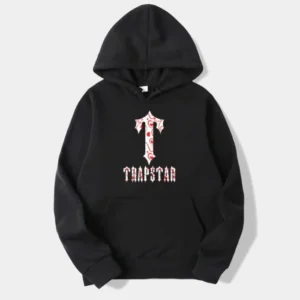Introduction
In the bustling world of streetwear, where brands emerge and fade with the changing tides of fashion, Trapstar has managed to carve out a lasting legacy. Originating from the gritty streets of London, this brand has become synonymous with urban culture, rebellion, and high fashion. This article explores the rise, influence, and enduring appeal of Trapstar, a brand that has successfully blended street aesthetics with a touch of luxury.
Origins and Early Beginnings
Trapstar was founded in 2005 by a group of friends—Mikey, Lee, and Will—who shared a passion for music, fashion, and art. The brand started humbly, with the founders printing T-shirts and selling them to friends and local boutiques in West London. The name “Trapstar” itself is a testament to the brand’s ethos, representing the idea of turning a “trap” (a difficult or precarious situation) into a “star” (a success).
From the outset, Trapstar’s designs were influenced by a blend of street culture, music, and rebellious spirit. The founders drew inspiration from their surroundings, the music they loved, and the people they knew, creating a brand that resonated deeply with the urban youth.
Distinctive Aesthetic and Influences
Trapstar’s aesthetic is a fusion of gritty streetwear and high fashion, characterized by bold graphics, military-inspired motifs, and a dark, edgy vibe. The brand often incorporates elements of punk, hip-hop, and grime culture, reflecting the diverse influences of its founders.
A hallmark of Trapstar’s design is the use of cryptic messages and imagery. Slogans like “It’s A Secret” and “Trapstar London” are frequently featured, adding an element of mystery and exclusivity. The brand’s iconic “Irongate” logo, reminiscent of wrought-iron gates, symbolizes strength and resilience, further cementing Trapstar’s identity as a brand for those who dare to defy conventions.
Rise to Prominence
Trapstar’s rise to prominence can be attributed to a combination of grassroots marketing, strategic collaborations, and celebrity endorsements. In the early days, the founders relied on word-of-mouth and organic growth, building a loyal following through their connections in the music and fashion scenes.
A turning point for the brand came with high-profile endorsements from celebrities and musicians. Rihanna, Jay-Z, and ASAP Rocky are just a few of the notable names who have been spotted wearing Trapstar, bringing the brand into the global spotlight. These endorsements not only boosted Trapstar’s visibility but also cemented its status as a cultural icon.
Collaborations and Expansions
One of Trapstar’s key strategies has been its collaborations with other brands and artists. These partnerships have allowed Trapstar to reach new audiences and expand its creative horizons. Notable collaborations include projects with Puma, Coca-Cola, and the video game series “Call of Duty,” each bringing a unique twist to Trapstar’s signature style.
In addition to collaborations, Trapstar has expanded its product range beyond apparel. The brand offers a variety of accessories, including hats, bags, and even homeware, all featuring its distinctive designs. This diversification has helped Trapstar maintain its relevance and appeal in a competitive market.
Cultural Impact and Legacy
Trapstar’s influence extends beyond fashion; it has become a cultural touchstone for many. The brand’s origins in the streets of London and its connection to music and art have made it a symbol of urban culture and creativity. Trapstar’s ability to stay true to its roots while evolving with the times has earned it a loyal following and a place in the pantheon of streetwear legends.
The brand’s impact is also evident in its commitment to social causes. Trapstar has been involved in various community initiatives, using its platform to raise awareness and support for issues such as youth empowerment and mental health. This sense of social responsibility has endeared the brand to its fans and reinforced its image as a positive force in the fashion industry.
Challenges and Resilience
Like any successful brand, Trapstar has faced its share of challenges. The competitive nature of the fashion industry, coupled with the pressures of maintaining relevance and authenticity, has tested the brand’s resilience. However, Trapstar’s ability to adapt and innovate has been key to its longevity.
The brand’s founders have always been hands-on, ensuring that Trapstar remains true to its vision and values. This dedication to quality and authenticity has helped Trapstar navigate the ups and downs of the fashion world and emerge stronger.
The Future of Trapstar
As Trapstar looks to the future, the brand shows no signs of slowing down. The founders continue to push creative boundaries, exploring new designs, materials, and collaborations. The brand’s commitment to sustainability is also becoming more prominent, with efforts to reduce its environmental impact and promote ethical fashion practices.
The digital landscape presents both opportunities and challenges for Trapstar. The brand’s strong online presence and engagement with social media have been crucial in reaching a global audience. However, staying ahead in the ever-changing digital world requires constant innovation and adaptation.
Conclusion
Trapstar’s journey from a small, grassroots operation to a global streetwear phenomenon is a testament to the power of passion, creativity, and resilience. The brand’s distinctive aesthetic, cultural influence, and commitment to its roots have set it apart in the crowded world of fashion. As Trapstar continues to evolve and grow, it remains a beacon of urban culture and a symbol of what can be achieved when you dare to defy the odds.

